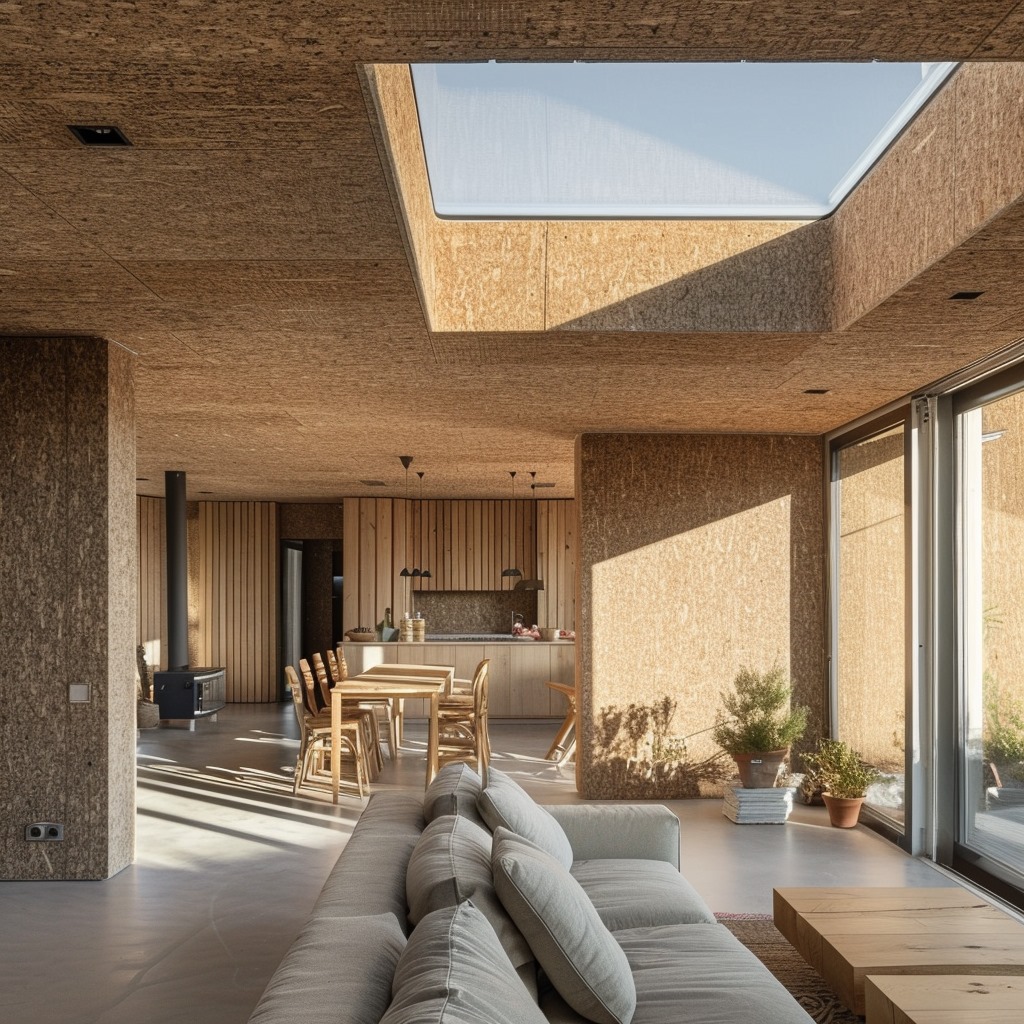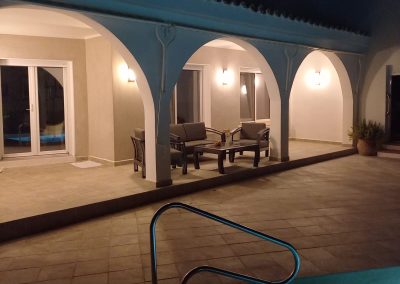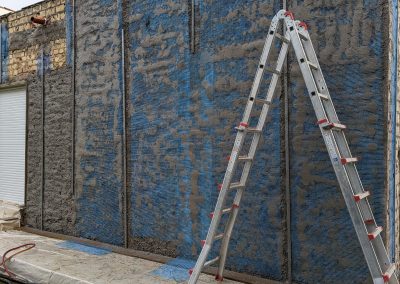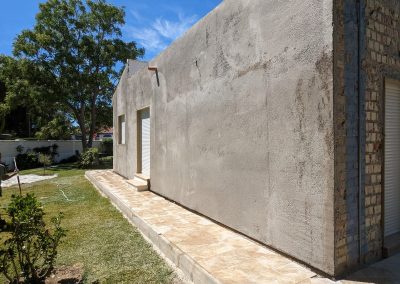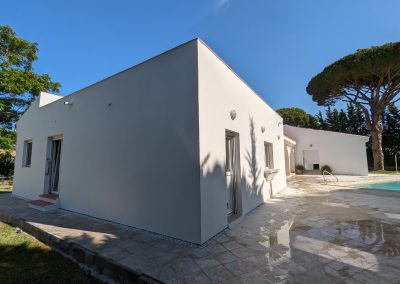External wall insulation plays a crucial role in enhancing the energy efficiency and comfort of homes. By preventing heat loss and reducing the demand for heating, it not only reduces energy bills but also helps combat climate change. Understanding the importance of external wall insulation is the first step towards making informed decisions about improving the thermal performance of your home.
Understanding the Importance of External Wall Insulation
External wall insulation acts as a protective barrier, shielding the walls of your home from external weather conditions. By creating an additional layer of insulation on the exterior walls, it helps minimize heat transfer through walls, thus improving thermal efficiency.
One of the key benefits of external wall insulation is its ability to reduce heat loss. A well-insulated home retains heat more effectively, resulting in lower energy consumption and reduced carbon emissions. This not only benefits the environment but also leads to significant cost savings on heating bills.
Moreover, external wall insulation helps regulate indoor temperatures, enhancing the comfort level of your living space. It can reduce heat transfer in summer, keeping the interior cool, and prevent cold spots in winter, resulting in a more consistent and pleasant environment.
Furthermore, external wall insulation can also improve the overall appearance of your property. With various finishes and colours available, you can enhance the aesthetic appeal of your home while reaping the benefits of energy efficiency. This can add value to your property and make it more attractive to potential buyers in the future.
Additionally, external wall insulation can act as a sound barrier, reducing external noise pollution and creating a quieter indoor environment. This is particularly beneficial if you live in a noisy neighbourhood or near busy roads, as it can significantly improve the quality of life within your home.
Exploring Different Materials Used in External Wall Insulation
When it comes to external wall insulation, various materials are available, each with its own unique properties and benefits. Understanding the different options can help you choose the most suitable solution for your home.
Mineral Wool
Mineral wool, also known as rock wool, is a popular choice for external wall insulation. Made from natural materials such as volcanic rock or recycled slag, it offers excellent fire resistance and thermal performance. Mineral wool is highly durable and provides effective sound insulation as well.
Glass Wool
Glass wool, also called fiberglass, is another commonly used material for external wall insulation. Manufactured from recycled glass fibers, it offers good thermal and acoustic insulation properties. Glass wool is also lightweight and easy to install.
Foam Core
Foam core insulation is a type of external wall insulation that utilizes rigid foam panels. These panels are made from materials such as expanded polystyrene (EPS) or polyisocyanurate (PIR). Foam core insulation offers excellent thermal resistance and is often used for its high energy-saving potential.
Spray Foam
Spray foam insulation is applied as a liquid and expands to fill the wall cavities before hardening. It provides a seamless and airtight insulation layer, offering exceptional thermal performance. Spray foam insulation is ideal for irregular-shaped walls and difficult-to-reach areas.
Polystyrene Beads
Polystyrene beads, also known as EPS beads, are lightweight and easy to install. They can be injected into the wall cavity, creating a thermal barrier. Polystyrene bead insulation is particularly effective in enhancing the thermal efficiency of solid walls.
Insulation Boards
Insulation boards, such as phenolic or PIR, are rigid panels that are fixed directly to the external walls. They offer excellent thermal insulation properties and are resistant to moisture and mould. Insulation boards are commonly used when a more robust and durable external wall insulation solution is required.
Acrylic Render
Acrylic render is a popular finishing layer used in external wall insulation systems. It provides an attractive and weather-resistant outer surface, protecting the insulation materials from moisture and UV radiation. Acrylic render comes in a wide range of colors and textures, allowing for creative design options.
Insulated Boards
Insulated boards combine the benefits of insulation and rendered finish in one system. These pre-insulated boards provide both thermal efficiency and aesthetic appeal, making them a convenient choice for external wall insulation applications.
Hemp
Hemp insulation is an eco-friendly option that utilizes the natural fibres of the hemp plant. It offers excellent thermal performance and is highly breathable, allowing moisture to escape. Hemp insulation is a sustainable choice for those looking to reduce their environmental impact.
Cork
Cork insulation is derived from the bark of the cork oak tree. It is a renewable and environmentally friendly material that offers good thermal insulation properties. Cork insulation is also resistant to moisture, mould, and pests.
When considering external wall insulation, it’s important to take into account not only the thermal performance and durability of the materials but also their environmental impact. Choosing sustainable options such as hemp or cork insulation can contribute to reducing your carbon footprint and promoting a greener future.
Another factor to consider is the aesthetic appeal of the external wall insulation system. Acrylic render and insulated boards offer a wide range of colours and textures, allowing you to customize the appearance of your home. Whether you prefer a traditional or contemporary look, there is a solution to suit your style.
Furthermore, it’s worth noting that some materials, such as mineral wool and glass wool, provide effective sound insulation. This can be particularly beneficial if you live in a noisy area or if you simply value peace and quiet in your home.
Overall, the choice of material for external wall insulation depends on your specific requirements and preferences. By exploring the different options available, you can make an informed decision that will enhance the thermal efficiency, durability, and aesthetics of your home.
Comparing the Cost-Effectiveness of Various External Wall Insulation Types
When considering external wall insulation, it’s important to take into account the cost-effectiveness of different options. While the initial installation cost may vary, it’s essential to consider the long-term savings and benefits.
This comparison can be made by evaluating the thermal performance, durability, maintenance requirements, and expected lifespan of each insulation type. Additionally, factors such as local climate conditions and energy prices should be considered when calculating the overall cost-effectiveness.
Furthermore, it is worth noting that certain types of external wall insulation may qualify for government incentives or grants aimed at promoting energy efficiency in buildings. These financial incentives can significantly impact the overall cost-effectiveness of the chosen insulation type, making it a more attractive option in the long run.
Moreover, when assessing the durability of different insulation types, it is important to consider not only the material itself but also the installation method. Proper installation by certified professionals can ensure the longevity and effectiveness of the insulation, reducing the need for frequent maintenance and repairs.
Factors to Consider When Choosing External Wall Insulation for Your Home
Choosing the right external wall insulation for your home involves several factors that should be carefully considered.
When it comes to external wall insulation, it’s not just a matter of picking the first option that comes your way. There are various aspects that need to be taken into account to ensure you make the best decision for your home. Let’s delve into some additional factors that can help you make an informed choice.
External Wall Insulation for Different Climate Zones
The climate zone in which your home is located plays a significant role in determining the most suitable type of external wall insulation. For example, certain materials may perform better in hot climates, while others are more effective in cold climates. Understanding the specific requirements of your climate zone will help you make an informed decision.
Consider the impact of temperature fluctuations, humidity levels, and extreme weather conditions on the performance of your chosen insulation. By selecting an insulation material that is tailored to your climate, you can ensure optimal thermal efficiency and energy savings.
Issues faced on the property when applying external render
Before implementing external wall insulation, it is crucial to assess any existing issues or problems on your property. This includes identifying areas with dampness, cracks, or structural weaknesses. Addressing these issues before insulation is crucial to ensure long-lasting performance and prevent any further damage.
By conducting a thorough inspection of your property, you can identify any underlying issues that may affect the installation process or compromise the effectiveness of the insulation. Taking the time to rectify these problems will not only enhance the overall performance of the insulation but also safeguard the structural integrity of your home.
Indoor Air Quality After Applying External Insulation
When selecting external wall insulation, it is important to consider the impact on indoor air quality. Some materials may release harmful chemicals or gases during and after installation. Choosing low-emission or eco-friendly insulation materials can help maintain a healthy indoor environment.
Indoor air quality is also affected by the breathability of the insulating material. Many external insulations are not breathable, therefore restricting the flow of moisture and increasing indoor humidity levels. There are many ways around this including the installation of an air circulation system (HVAC) when possible.
Ensuring good indoor air quality is essential for the well-being of your household. By opting for insulation materials that have been tested and certified for their low emissions, you can create a comfortable living space that promotes good health and reduces the risk of respiratory issues.
Extra Considerations when Insulating Solid Walls
If your home has solid walls, additional considerations need to be taken into account during the insulation process. Solid walls have different characteristics compared to cavity walls, requiring specialized techniques or materials. Consulting with a professional can help ensure the insulation is properly installed on solid walls.
Insulating solid walls requires careful planning and expertise to ensure effective insulation without compromising the structural integrity of your home. Professional advice can guide you in selecting the most suitable insulation method for solid walls, whether it’s internal or external insulation or a combination of both.
By considering these additional factors, you can make a well-informed decision when choosing external wall insulation for your home. Remember, investing in the right insulation not only enhances the energy efficiency of your property but also contributes to a more comfortable and sustainable living environment.
Future Trends in External Wall Insulation Technologies
The field of external wall insulation is continuously evolving with advancements in technologies and materials. One of the emerging trends is the development of smart insulation systems that utilize sensors and automation to optimize energy efficiency. These systems can adjust insulation levels based on external conditions, ensuring optimal thermal comfort while minimizing energy consumption.
Furthermore, the integration of renewable energy solutions, such as solar panels or heat pumps, with external wall insulation can further enhance the sustainability and energy efficiency of homes.
As the demand for sustainable building practices continues to grow, researchers and engineers are exploring innovative materials for external wall insulation. One promising development is the use of aerogels, which are lightweight and highly insulating materials that can significantly improve the thermal performance of buildings. Aerogels have the potential to revolutionize the way we insulate our homes, offering superior efficiency in a compact form.
Additionally, the concept of biophilic design is gaining traction in the realm of external wall insulation. By incorporating natural elements such as green walls or living facades into insulation systems, homeowners can not only improve energy efficiency but also enhance the aesthetic appeal of their properties. Biophilic design aims to create a harmonious relationship between humans and nature, promoting well-being and sustainability.
In conclusion, external wall insulation provides homeowners with an opportunity to improve the energy efficiency, comfort, and aesthetics of their homes. Understanding the various materials available, considering factors such as cost-effectiveness and climate suitability, and staying informed about emerging trends can help make informed decisions when choosing external wall insulation for your home.

